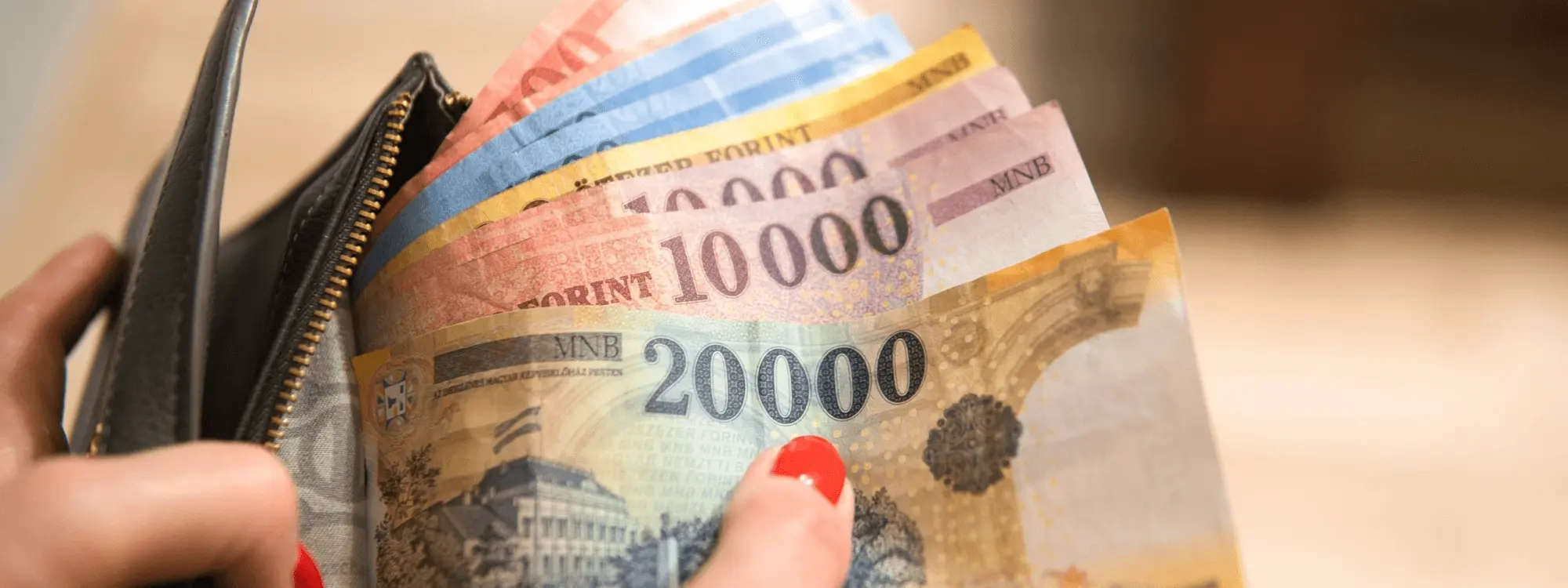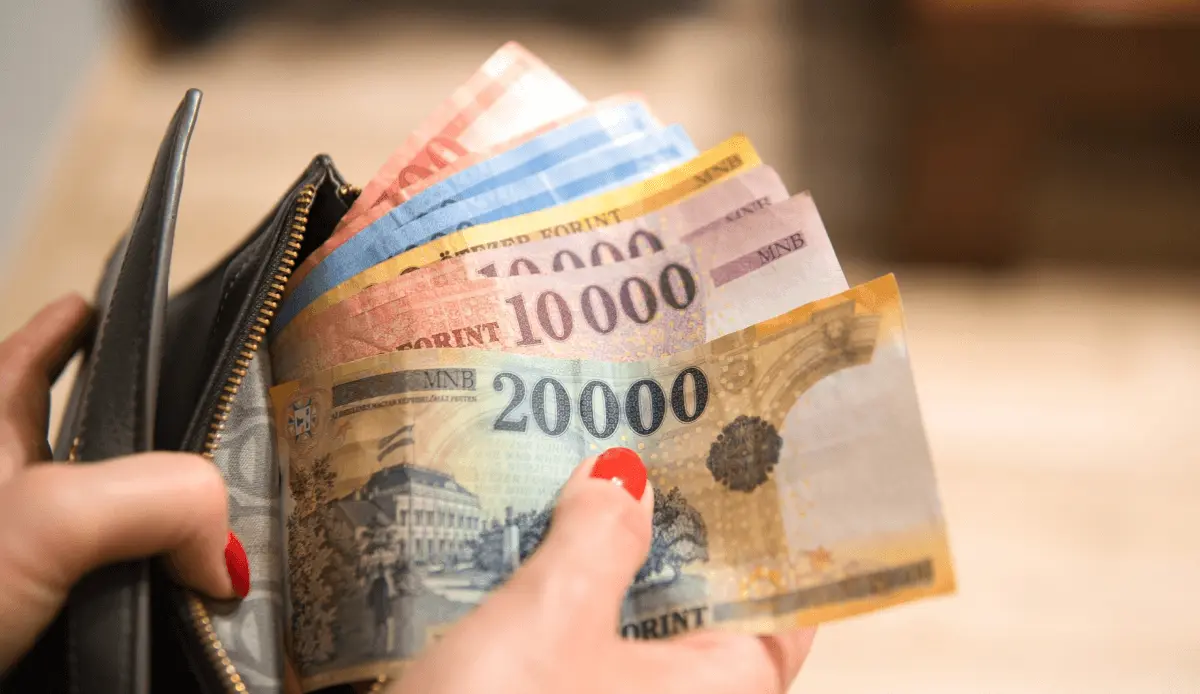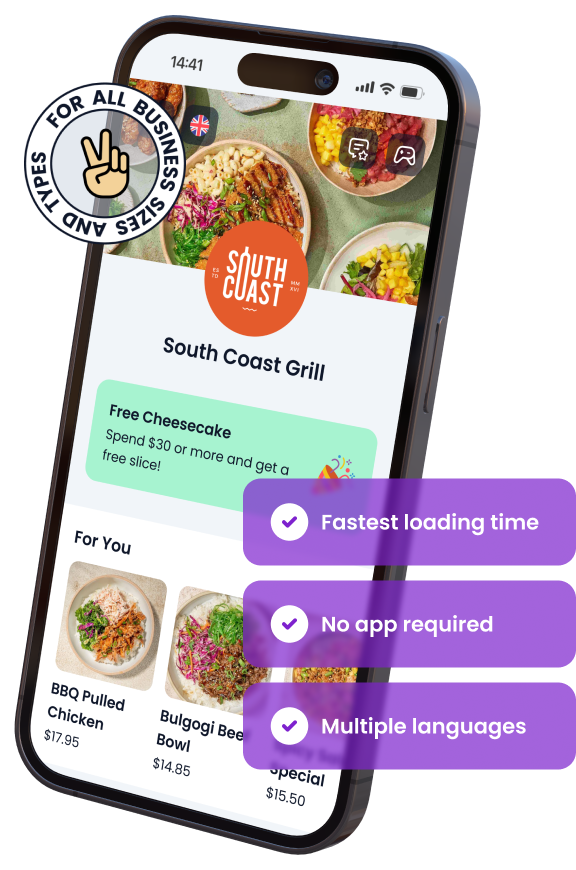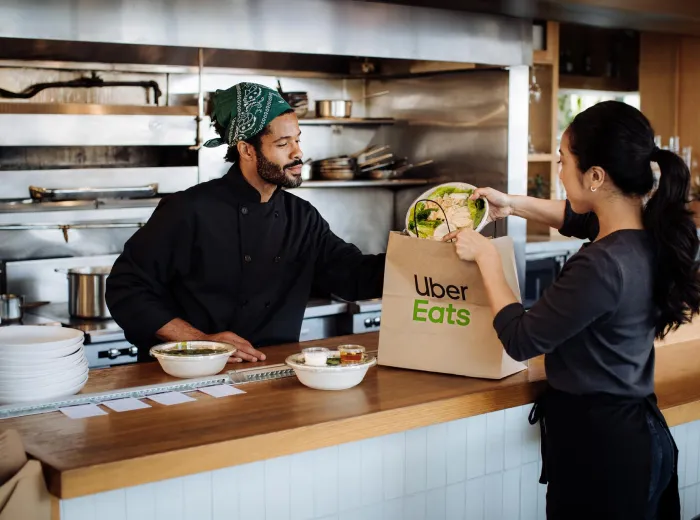

What are The Current VAT (AFA) Rates for Restaurants in Hungary?
Hungary’s Value Added Tax (AFA) system is a critical component of the country’s economic structure, impacting businesses across all industries, especially in the food and beverage sector. For restaurant owners, understanding the current VAT rates is not only a matter of legal compliance but also a way to ensure profitability and strategic pricing. Whether you operate a small café, a fine dining restaurant, or a bustling bar, keeping up-to-date with VAT regulations is essential to maintain smooth operations and avoid costly penalties.
The Hungarian government applies different VAT rates depending on the type of goods and services offered. Restaurants, in particular, face a unique set of rules that determine how VAT is charged on food, drinks, and other services. Navigating this complex tax landscape can feel overwhelming, but understanding the basics of VAT, as well as specific exemptions and reductions, can give your restaurant a financial edge.
This guide will provide a detailed look at the current VAT rates in Hungary for restaurants, how these rates affect pricing strategies, and the best ways to manage VAT in your restaurant operations. From filing returns to optimizing tax-related costs, this article covers everything you need to know to stay compliant and profitable.
Would you like to listen our deep-dive conversation about this article?
Understanding VAT (AFA) in Hungary
Hungary’s VAT system, also known as Általános Forgalmi Adó (AFA), plays a crucial role in the taxation framework for restaurants and other food and beverage businesses. Understanding how VAT works and its application in the restaurant industry is essential for ensuring compliance and maximizing your financial efficiency. In this section, we’ll break down what VAT is, how it applies specifically to the hospitality industry, and why adherence to VAT regulations is vital for restaurant owners.
What is VAT (AFA)?
VAT (Value Added Tax) is a consumption tax levied on the sale of goods and services at each stage of production and distribution. In Hungary, this tax is known as AFA and is applied at varying rates depending on the nature of the service or product.
- Applied at every point in the supply chain, from raw ingredients to final sale
- Paid by the end consumer, though collected and filed by businesses
- Different rates for different categories (e.g., food, alcoholic beverages)
How VAT (AFA) Applies to the Food & Beverage Industry
The restaurant sector in Hungary is subject to distinct VAT rates that vary depending on what is being sold. It’s essential for restaurant owners to understand these distinctions to apply the correct rate to different items.
- Standard VAT rate applies to most items, but certain food products may have reduced rates
- Alcoholic beverages usually carry a higher VAT rate than non-alcoholic drinks
- Some services, such as catering and delivery, might be taxed differently from in-house dining
Importance of Complying with VAT Regulations in Hungary
Complying with Hungary’s VAT regulations is not optional—it’s a legal requirement that comes with significant financial and reputational consequences if ignored.
- Failure to comply can result in penalties, fines, or even legal action
- VAT audits by tax authorities are common and can be stressful if records are incomplete or incorrect
- Ensures transparency in your business operations and builds trust with both customers and regulatory bodies
Understanding these fundamental aspects of Hungary’s VAT system sets the foundation for managing your restaurant’s tax obligations effectively and avoiding compliance issues.
Current VAT (AFA) Rates for Restaurants
In Hungary, the VAT (AFA) rates for restaurants are determined based on the types of products and services offered. It’s crucial for restaurant owners to know the specific rates applicable to their business to ensure compliance and optimize their pricing strategies. This section explores the standard and reduced rates, as well as potential exemptions, so you can stay informed and apply the correct VAT rates in your restaurant.
Standard VAT Rate for Restaurants in 2024
As of 2024, the standard VAT rate in Hungary for most goods and services, including many items sold in restaurants, is set at 27%. This is one of the highest VAT rates in Europe and applies to a broad range of products and services.
- Applies to general restaurant services, including dining in
- Covers a wide range of items such as prepared meals, non-alcoholic beverages, and some ingredients
- Affects pricing strategy, as it significantly impacts the final cost to consumers
Reduced VAT Rates for Specific Food Items
Certain food items in Hungary are subject to reduced VAT rates, which can help restaurant owners offer competitive pricing on these items while complying with tax regulations.
- 5% VAT rate for essential food items such as fresh bread, milk, and certain meat products
- 18% VAT rate for items like milk-based products, such as cheese and yogurt, which are widely used in many restaurant dishes
- Restaurants offering locally sourced or organic products may benefit from these lower rates
VAT Exemptions for Restaurants: What to Know
While most items in restaurants are subject to VAT, there are some exemptions or cases where VAT may not apply. Understanding these scenarios can help restaurant owners avoid overpaying on their tax obligations.
- Exemptions may apply to small-scale businesses with low annual revenues under certain thresholds
- Specific services or sales to charitable organizations or events may qualify for exemptions
- Understanding when and how to apply for exemptions can lead to significant cost savings
Staying up to date with these VAT rates ensures that your restaurant is compliant with Hungarian tax laws while also helping you make informed pricing decisions that align with your business strategy.
How VAT Rates Affect Restaurant Operations
The VAT rates applied to your restaurant have a direct impact on various operational aspects, from pricing and profitability to customer perception. Understanding how these rates influence your day-to-day operations allows you to adjust strategies to maintain competitiveness while remaining compliant with Hungary’s tax laws. In this section, we’ll examine how VAT affects key areas of restaurant operations, from menu pricing to managing supply chain costs.
Impact on Menu Pricing and Profit Margins
One of the most immediate effects of VAT on a restaurant is its influence on menu pricing. As VAT is added to the price of goods and services, you must account for these taxes when setting prices to maintain profitability.
- VAT adds an extra layer of cost that must be either absorbed by the business or passed on to the customer
- Failing to account for VAT when pricing items can erode profit margins
- Strategic pricing models, such as value-based pricing, can help balance VAT costs while keeping prices attractive to customers
Managing VAT in Supply Chain and Ingredient Costs
VAT doesn’t only affect the end price of meals; it also plays a role in your supply chain and the cost of raw ingredients. Many of the items your restaurant purchases are subject to VAT, which adds complexity to your cost management.
- Suppliers charge VAT on ingredients, which must be factored into your overall cost structure
- Different VAT rates on imported vs. locally sourced ingredients can affect sourcing decisions
- Some businesses may be eligible for VAT deductions or refunds on business-related purchases, helping to reduce operational costs
How VAT Influences Customer Pricing Perception
Customers are highly sensitive to pricing, especially when it comes to dining out. How VAT is presented and integrated into your pricing can influence customer behavior and their perception of value.
- Including VAT in listed prices vs. adding VAT at the time of payment can change customer perceptions
- Offering discounts or promotions can help soften the impact of VAT on higher-ticket items
- Clear communication about VAT-inclusive pricing can build customer trust and transparency
By understanding how VAT rates affect these areas of your restaurant operations, you can develop strategies to manage costs, set competitive prices, and maintain profitability while staying compliant with Hungarian VAT regulations.
How to Calculate and File VAT for Your Restaurant
Effectively calculating and filing VAT is crucial for restaurant owners in Hungary. Proper VAT management ensures compliance with tax regulations, minimizes the risk of errors, and helps avoid penalties. This section provides a step-by-step guide on how to calculate VAT, when and how to file VAT returns, and common mistakes to avoid in the process. We’ll also explore useful tools and software that can streamline VAT management for your restaurant.
VAT Calculation Methods: A Simple Guide
Calculating VAT for your restaurant involves understanding how to apply the correct rates to your products and services. Knowing the applicable VAT rates and how to calculate them ensures accuracy in pricing and tax payments.
- Identify applicable VAT rates: Determine whether your items fall under the standard, reduced, or exempt VAT categories.
- Calculate VAT for sales: Multiply the sale price by the applicable VAT rate (e.g., 27% for standard goods).
- Example: A meal priced at HUF 5,000 with a 27% VAT rate would include a VAT charge of HUF 1,350.
- Keep track of VAT paid on purchases: This includes VAT on raw materials, supplies, and other operational expenses.
When and How to File VAT Returns in Hungary
Filing VAT returns is a legal obligation for all restaurant businesses in Hungary. VAT returns must be submitted to the National Tax and Customs Administration (NAV) on a regular basis, depending on your revenue and business size.
- Monthly or quarterly filings: Most restaurant owners need to file VAT returns either monthly or quarterly based on their total revenue.
- Filing deadlines: Returns must typically be filed by the 20th of the month following the reporting period.
- Submit through NAV’s online system: Use the government’s electronic portal to file your VAT return, ensuring that all invoices and calculations are accurate.
Common VAT Filing Mistakes to Avoid
Errors in VAT filings can result in fines, penalties, and extra scrutiny from tax authorities. Avoiding these common mistakes can save your restaurant time and money.
- Failing to keep accurate records: Invoices, receipts, and VAT calculations must be kept meticulously.
- Incorrectly applying VAT rates: Misclassifying items under the wrong VAT rate can lead to underpayments or overpayments.
- Missing filing deadlines: Late filings can lead to penalties; be sure to set reminders to avoid delays.
Tools and Software for VAT Management in Restaurants
Modern software tools can help simplify VAT calculation, record-keeping, and filing. By automating these processes, you can reduce the risk of errors and ensure timely compliance.
- Accounting software: Use systems like QuickBooks, Xero, or Sage, which have built-in VAT management features.
- POS systems with VAT tracking: Many restaurant point-of-sale (POS) systems allow you to track VAT on each transaction, streamlining end-of-period calculations.
- VAT calculators and apps: These can help with quick calculations and record storage.
Efficient VAT management ensures your restaurant remains compliant, avoids penalties, and operates smoothly within Hungary’s tax framework. By leveraging the right tools and practices, you can simplify the process and focus on growing your business.
Special VAT (AFA) Considerations for Restaurants
Restaurants in Hungary face several unique VAT considerations that may differ from other types of businesses. These special cases include VAT rules for catering services, alcoholic beverages, and delivery or takeaway options. Understanding how these specific areas are treated under Hungarian VAT law can help restaurant owners avoid common pitfalls and optimize their operations for tax efficiency.
VAT for Catering and Events: How It Differs
Catering services often fall under different VAT rules compared to standard in-house dining, mainly due to the nature of off-site services and the different types of goods provided.
- Standard VAT rate (27%) generally applies to most catering services.
- VAT can be more complex if catering involves non-standard food items or services.
- Events with food and beverage packages may also be subject to specific tax treatments depending on the nature of the event (e.g., corporate vs. private).
For catering businesses operating alongside a restaurant, it’s crucial to apply the correct VAT rates based on the service provided and the location of the event.
VAT Rules for Alcoholic Beverages in Restaurants
Alcoholic beverages in Hungary are subject to a higher VAT rate, which can significantly impact pricing and profit margins for restaurants and bars.
- 27% VAT rate applies to all alcoholic beverages, including beer, wine, and spirits.
- This rate is higher than for non-alcoholic drinks, which may fall under the reduced VAT rate, making alcohol more expensive to sell and purchase.
- Restaurants should clearly distinguish between alcoholic and non-alcoholic items on invoices to ensure proper VAT application.
How VAT Affects Delivery and Takeaway Services
With the rise of delivery and takeaway services in recent years, many restaurants have had to adjust their VAT practices to accommodate this growing segment. VAT for these services can vary, depending on the type of food and delivery service offered.
- Standard VAT rate applies to most takeaway and delivery services, but some ready-to-eat foods may qualify for reduced rates.
- Packaging costs are usually subject to the same VAT rate as the food they contain.
- Delivery fees themselves are generally subject to VAT, requiring accurate tracking and invoicing.
Cross-Border VAT Considerations for Touristic Restaurants
Restaurants in tourist-heavy areas or those that cater to international customers must also consider cross-border VAT implications.
- VAT refunds may be available for tourists on goods purchased but not consumed in Hungary.
- Restaurants serving international guests should be aware of potential differences in VAT application for catering, events, or delivery to cross-border clients.
- Special VAT rules may apply for businesses providing services across multiple countries in the EU.
Understanding these special VAT considerations can help restaurant owners in Hungary navigate the complexities of the tax system while maintaining compliance and optimizing their financial management. By accounting for these nuances, you can avoid costly mistakes and ensure your business operates smoothly in this competitive industry.
How to Optimize VAT for Your Restaurant
Optimizing VAT for your restaurant is about more than just compliance—it’s about making strategic decisions that can reduce tax burdens and improve cash flow. By effectively managing VAT-related costs, taking advantage of available credits and refunds, and planning ahead, restaurant owners can minimize the financial impact of VAT on their operations. In this section, we’ll explore actionable strategies to help you optimize VAT for your restaurant.
Strategies for Managing VAT-Related Costs
One of the best ways to optimize VAT is by strategically managing how VAT costs impact your overall expenses. By identifying areas where VAT can be reduced or offset, you can improve your restaurant’s profitability.
- Focus on locally sourced products: Many locally sourced or fresh food items are subject to reduced VAT rates (such as 5% on essential food items), helping to lower overall tax costs.
- Bundle services: Combining products and services that fall under different VAT categories can reduce the overall VAT burden (e.g., offering a fixed-price menu with lower-taxed food items).
- Leverage supplier negotiations: Work with suppliers to ensure that VAT is correctly applied and take advantage of any lower VAT rates on bulk or long-term contracts.
How to Take Advantage of VAT Refunds and Credits
Understanding how to claim VAT refunds and credits can lead to significant savings for your restaurant. If your restaurant pays more VAT on purchases than it collects on sales, you may be eligible for refunds from the tax authorities.
- VAT on business purchases: You can claim VAT credits on purchases made for your restaurant, such as equipment, ingredients, and supplies.
- Export-related refunds: Restaurants catering to international guests or providing cross-border services can apply for VAT refunds on certain purchases related to export services.
- Accurate record-keeping: Maintain detailed records of all VAT-paid expenses to ensure you can claim every possible refund or credit.
VAT Planning: Minimizing the Tax Burden While Staying Compliant
Proactive planning is key to minimizing your VAT liabilities. By forecasting VAT costs and strategically planning your purchases and sales, you can stay compliant while reducing the financial impact.
- Regular VAT reviews: Conduct periodic reviews of your VAT records to ensure compliance and identify any potential tax-saving opportunities.
- Optimize cash flow: Timing your purchases and VAT filings can help improve cash flow, especially if you can defer VAT payments on certain expenses.
- Consider professional advice: VAT regulations can be complex, and a tax professional can help ensure your restaurant is taking full advantage of available credits, deductions, and planning strategies.
Seeking Professional Help for VAT Optimization
For many restaurant owners, navigating VAT regulations and optimization strategies can be overwhelming. Hiring a VAT specialist or accountant can help ensure that your business is not only compliant but also making the most of tax-saving opportunities.
- VAT consultants can provide tailored advice specific to your restaurant’s operations and industry.
- Accountants with VAT expertise can manage your filings, identify refund opportunities, and handle communications with tax authorities.
- Ongoing support from professionals can help you stay ahead of changes in VAT regulations and ensure your restaurant maximizes every potential tax advantage.
By implementing these strategies, you can optimize your VAT processes and reduce unnecessary costs, ultimately leading to a more profitable and financially efficient restaurant business.
Future of VAT Rates for Restaurants in Hungary
Understanding the potential future changes to VAT rates is critical for restaurant owners in Hungary. VAT laws are subject to shifts based on government policies, economic conditions, and global market trends. Anticipating these changes and preparing your business accordingly can help you remain agile and competitive. In this section, we’ll explore upcoming changes to VAT laws, the economic factors influencing these changes, and how restaurant owners can prepare for potential adjustments.
Upcoming Changes to VAT Laws in 2024 and Beyond
Hungary has seen several VAT adjustments in recent years, and more changes could be on the horizon. These shifts may include rate increases, new exemptions, or changes in the categorization of certain goods and services.
- Potential rate adjustments: The standard 27% VAT rate may remain, but future government policies could introduce changes, especially in response to economic needs.
- Shifts in reduced rates: There could be alterations to the products that qualify for reduced VAT rates, particularly as governments prioritize economic recovery and inflation control.
- New compliance requirements: The Hungarian government may introduce more stringent filing and reporting rules to ensure greater VAT transparency, particularly for sectors like hospitality and restaurants.
How Economic Trends May Influence VAT Adjustments
Economic conditions, both locally and globally, play a major role in determining VAT policy. Restaurant owners must keep an eye on these trends to anticipate how VAT changes could impact their operations.
- Inflation: Rising inflation rates could prompt the government to adjust VAT rates to control pricing pressures, potentially increasing tax burdens for restaurant owners.
- Economic recovery initiatives: Post-pandemic recovery efforts may lead to temporary VAT reductions or targeted tax relief for small businesses, including restaurants.
- EU directives: Hungary’s VAT policies are influenced by broader European Union directives, meaning that any significant shifts in EU tax policy could lead to VAT adjustments in Hungary.
Preparing for Potential VAT Increases in the Restaurant Industry
While VAT changes can create uncertainty, there are ways for restaurant owners to prepare for potential increases in VAT rates. Proactive planning can help mitigate the impact of these changes on your business.
- Price strategy adjustments: Review your pricing structure regularly to accommodate potential VAT rate hikes without alienating customers.
- Cost management: Streamline operations and reduce unnecessary costs to offset the financial burden of higher VAT rates.
- Customer communication: Clearly explain any price changes related to VAT increases to maintain transparency and trust with your customers.
Staying ahead of potential VAT changes allows your restaurant to remain flexible and adaptable, ensuring that you can navigate shifts in tax policy with minimal disruption to your business operations. By keeping informed and adjusting your strategy accordingly, you can safeguard your restaurant’s financial health while remaining compliant with Hungary’s evolving VAT regulations.
Navigating the complexities of VAT (AFA) for restaurants in Hungary can be challenging, but understanding the current rates and regulations is essential for maintaining compliance and optimizing your financial performance. From understanding the different VAT rates for food, beverages, and services to managing filing requirements and preparing for potential future changes, staying informed allows restaurant owners to make strategic decisions that benefit their bottom line. By applying the right strategies for VAT optimization, using the correct tools, and seeking professional help when necessary, your restaurant can thrive in a competitive market while staying on the right side of tax authorities. Ultimately, proactive VAT management is not just about following the rules—it’s about positioning your business for long-term success.
ABOUT THE AUTHOR
Erkin Coban
Your Customers Deserve The Best
And we got Menuviel for them.
The fastest and easy-to-use online QR menu with 12+ unique features. Choose Menuviel and elevate your service quality to the next level.
Use free for the first 30 days.

In This Article

Free AI Tools for Restaurants
TRY NOW ➜

Enjoy discounted prices for Hungary
We adjust our subscription price for Hungary, so you enjoy all the same great features at a lower, more affordable rate.







